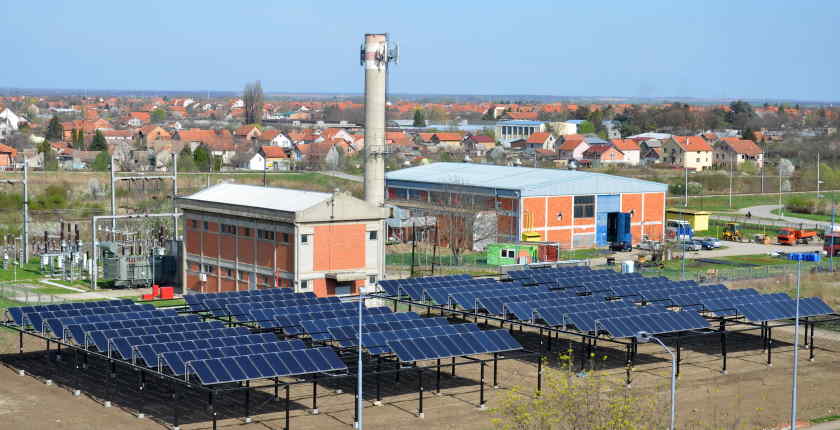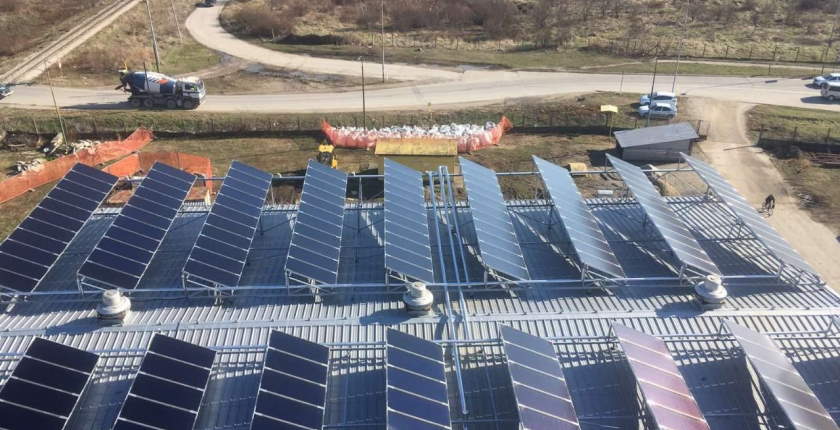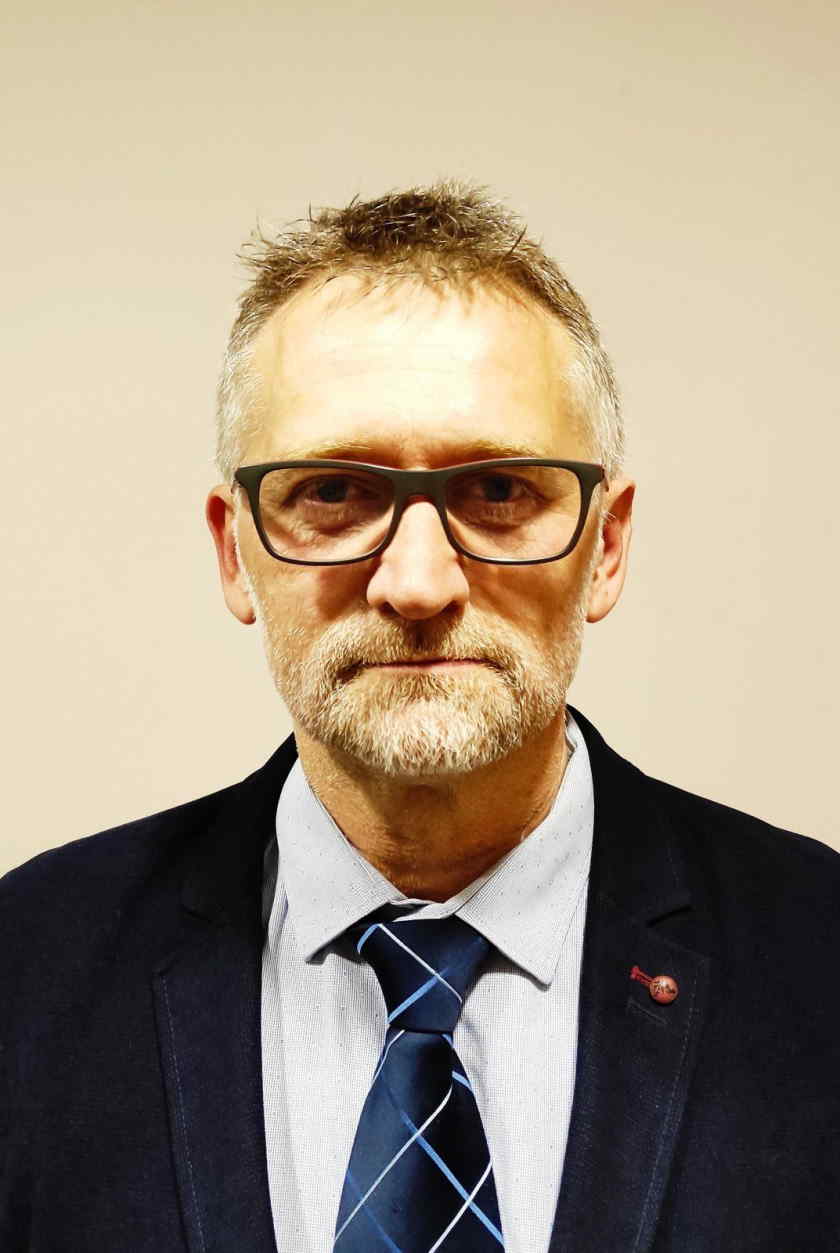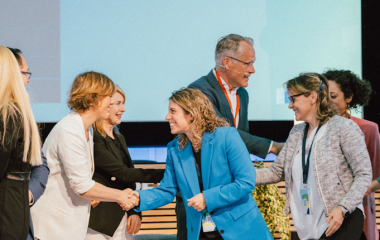
Photo: First phase of the solar-thermal in Pančevo (JKP Grejanje)
The Serbian city of Pančevo is home to the Balkan region’s largest solar thermal system for the preparation of sanitary hot water by using solar energy. The system, operated by public heating utility JKP Grejanje, has demonstrated that the use of solar energy for heating water is cheaper than using fossil fuels, and that it also reduces pollution, so the company now plans to build another, more advanced one, which will be able to produce heat energy from solar as well.
The year 2017 marked the start of the pioneering venture in the sector of district heating systems. JKP Grejanje deployed 360 solar thermal collectors, with a total installed capacity of 700 kW and an annual production of 600 MWh. At that time, it was the largest solar thermal system in Serbia. The money came from the EU’s IPA funds as part of cross-border cooperation between Serbia and Romania. The thermal collectors were placed over 906 square meters of land.
The solar thermal system has a capacity of 1 MW and an annual output of 900 MWh
The system was expanded in March this year, in cooperation with USAID, when a further 198 thermal collectors were added, boosting the total capacity to slightly over 1 MW and the projected annual output to 900 MWh. It is now the largest solar thermal system in the Balkans.
The expansion project was unique because the collectors were installed on a roof that faces the east and west, so a special steel structure was built on the top of the building to allow the devices to be positioned towards the south, which is more effective.
The advantages of this system are lower costs, the reduction of CO2 emissions, a stable price of thermal energy, and a 100% domestic energy source
The total investment is estimated at EUR 600,000. Given the very long operational life, of 25-30 years, and low operating costs, the price of hot water is lower than when using natural gas, the fuel the company most commonly utilizes.
The reduction of CO2 emissions by more than 200 tons a year is not negligible either
Most importantly, however, the project enables a completely stable price of thermal energy by using solar energy, which is not the case with sources that are market commodities. Also, the source is 100% domestic, which increases the country’s energy independence.
Solar energy will also be used for heating

Zoran Božanić, technical director at JKP Grejanje, has told Balkan Green Energy News that the solar thermal system covers 15% of the total demand for hot sanitary water in Pančevo.
Serbia is ideal for using solar energy to produce heat

“The basic idea behind installing this system was to show that using solar energy to prepare hot sanitary water is cost effective, and that it makes sense to install collectors wherever sanitary hot water is needed. But that’s not all. The excellent results of the project sparked the interest of professionals and businesspeople who are thinking of using solar energy for heating. Thanks to the parameters by which our district heating systems work, Serbia is an ideal location to implement the idea,” Božanić said.
Until not so long ago, the use of solar energy for district heating systems was only an idea, but it has been successfully applied in Denmark for more than 15 years.
A feasibility study for a solar thermal project funded by the EBRD is underway
“In the preparation of sanitary hot water, thermal energy is used immediately or stored for a very short time, but in heating, long-term storage is needed in order to save the energy obtained from May to September and then use it in autumn and winter,” he explained.
A pre-feasibility study has been produced in cooperation with the European Bank for Reconstruction and Development (EBRD), and a feasibility study, aimed at proving the concept, is currently underway.
Within the Renewable District Energy in the Western Balkans fund, in addition to Pančevo, the EBRD is helping the cities of Bor, Niš, Novi Sad, and Zrenjanin to develop feasibility studies as a proof that the application of solar thermal technology in district energy systems is a good and technologically-advanced solution. Moreover, solar thermal projects should contribute to solving the major issue of air pollution in the country, but also to achieving energy independence.
Pančevo could cover one fourth of thermal energy needs with solar energy
According to Božanić, solar thermal collectors and storage should be located near the Kotež heating plant on about ten hectares. The collectors would occupy six hectares, and the storage, which is in fact a specially equipped water pool, would be built on the remaining area. Solar collectors should take up 35,000 square meters while the storage unit would have a capacity of 150,000 cubic meters.
The heat storage facility will have a capacity of 150,000 cubic meters
Part of the heat produced would be used directly, while part of it will be utilized indirectly, with the help of absorption heat pumps.
“Thermal energy from this facility should provide up to 24% of the energy needed for heat consumption, in particular green energy, and it would be the first such facility in Southeastern Europe and beyond, given that they now exist only in Denmark and China, while our project is more advanced than the few that exist in the EU,” Božanić said.


















Be the first one to comment on this article.